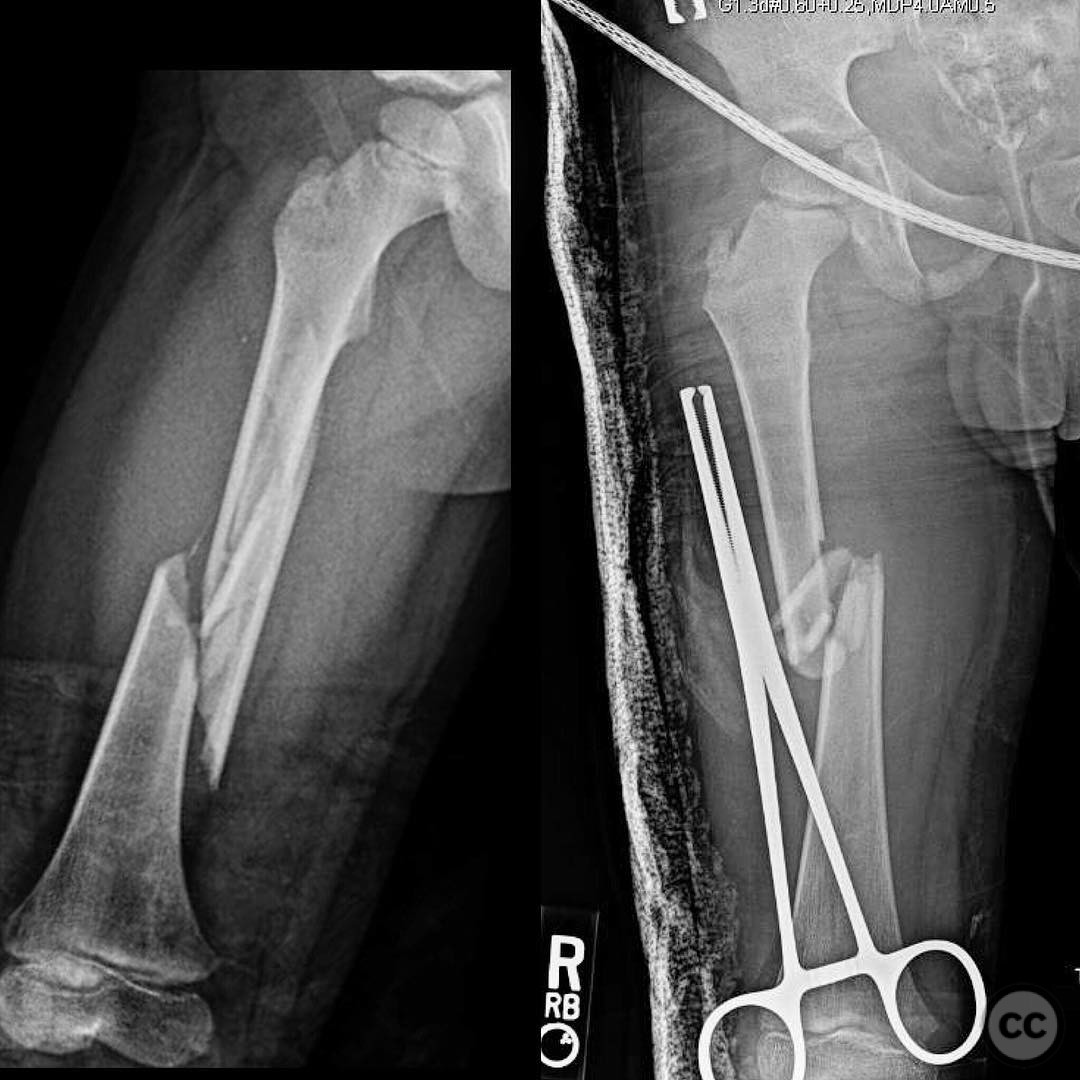Bilateral Comminuted Diaphyseal Femur Fractures in Pediatric Siblings Managed with Submuscular Plating
Score and Comment on this Case
Clinical Details
Clinical and radiological findings: Two male siblings, aged 5 and 7 years, were involved in a high-speed motor vehicle collision (MVC) involving a minivan and a semitruck. Both sustained comminuted diaphyseal fractures of the right femur. The 5-year-old presented with an open fracture, while the 7-year-old had a closed fracture. Both patients were hemodynamically stable and cleared for early definitive surgical intervention. Radiographic evaluation confirmed length-unstable fracture patterns in both cases.
Preoperative Plan
Planning remarks: The preoperative plan involved percutaneous submuscular plating for both patients, considering the length-unstable nature of the fractures. This approach was chosen to minimize the risk of shortening and malunion associated with flexible intramedullary nailing in such fracture patterns. The contralateral femur was measured to ensure appropriate length restoration.
Surgical Discussion
Patient positioning: Both patients were positioned supine on a radiolucent operating table to facilitate intraoperative fluoroscopic imaging and access for plating.
Anatomical surgical approach: A minimally invasive percutaneous osteosynthesis (MIPO) approach was utilized. A small incision was made proximal and distal to the fracture site, allowing for submuscular passage of a 3.5 mm dynamic compression plate (DCP) along the lateral aspect of the femur. The plate was contoured using plate benders to match the anatomical curvature of the femur.
Operative remarks:The operative technique emphasized preservation of fracture biology by minimizing soft tissue disruption. The use of submuscular plating provided stable fixation while respecting the periosteal blood supply, which is crucial for fracture healing in pediatric patients. Intraoperative fluoroscopy confirmed satisfactory alignment and length restoration in both cases.
Postoperative protocol: Postoperatively, both patients were managed with non-weight bearing status initially, progressing to partial weight bearing as tolerated by clinical and radiographic evidence of healing. Full weight bearing was anticipated by 6-8 weeks post-surgery, contingent on fracture consolidation.
Follow up: Not specified
Orthopaedic implants used: 3.5 mm Dynamic Compression Plate (DCP)
Search for Related Literature

orthopaedic_trauma
- United States , Seattle
- Area of Specialty - General Trauma
- Position - Specialist Consultant

Industry Sponsership
contact us for advertising opportunities

 and the left is big brother (7yo). They both susta(.jpg)
Article viewed 126 times
28 Jul 2025
Add to Bookmarks
Full Citation
Cite this article:
Surname, Initial. (2025). Bilateral Comminuted Diaphyseal Femur Fractures in Pediatric Siblings Managed with Submuscular Plating. Journal of Orthopaedic Surgery and Traumatology. Case Report 10604661 Published Online Jul 28 2025.